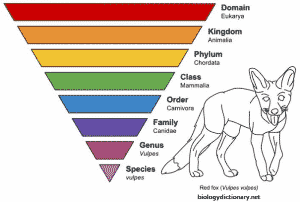Blog
Animal Classifications: Mustelids
Read on to learn about how we organize the world’s animals.
Highlight: Meet a mustelid during our First Friday Family Night, March 2nd, 2018 from 5p-8p!
What is taxonomy and what do mustelids have to do with it?
Taxonomy is the classification of plants and animals, and Mustelids are a subcategory in the animal classification system we use. Mustelids are a guest favorite at CuriOdyssey, but many guests probably wouldn’t know what a mustelid is! We’re here to help.
So, what are mustelids? (a.k.a. mustelidae)
Animal Diversity Web says, “Mustelidae is the largest family within Carnivora and is comprised of 56 species in 22 genera. Members of this family include weasels, stoats, polecats, mink, marten, fishers, wolverines, otters, badgers and others.” Basically, mustelids are a subcategory of mammals; they are carnivorous mammals whose bodies are usually elongated, with short legs and short rostrum (visually: a short snout).
‘Family’? ‘Genera’? What’s all this terminology?
This is taxonomy in action. ‘Family’ and ‘genera’ (plural of ‘genus’) are groups within the animal organization system. All animals are part of one main category, “Kingdom Animalia”. From there, there are even more specific subcategories where animals that are similar are put together, away from the other animals that don’t share certain characteristics with them. So, mustelids being the largest ‘family’ within the ‘class’ Carnivora means mustelids make up the most carnivores (meat eaters) of the animal kingdom.
A quick read about the animal classification system here.

As an example, look at the classification** of our river otters:
- North American River Otter (Lontra canadensis):
- Domain: Eukaryota
- Kingdom: Animalia [an animal]
- Phylum: Chordata [had a notochord (cartilaginous rod that supports the body) at some point during life cycle]
- Class: Mammalia [is a mammal with hair, 3 middle-ear bones, and produces milk through mammary glands]
- Order: Carnivora [is a carnivore (eats meat, but can have a varying diet)]
- Family: Mustelidae [has an elongated body, tiny limbs, small snout]
- Genus: Lontra [otter]
- Species: Lontra canadensis [North American River Otter]
- Genus: Lontra [otter]
- Family: Mustelidae [has an elongated body, tiny limbs, small snout]
- Order: Carnivora [is a carnivore (eats meat, but can have a varying diet)]
- Class: Mammalia [is a mammal with hair, 3 middle-ear bones, and produces milk through mammary glands]
- Phylum: Chordata [had a notochord (cartilaginous rod that supports the body) at some point during life cycle]
- Kingdom: Animalia [an animal]
So, from their classification alone we can learn characteristics about different animals even if we have never seen them. **Please note, animals in these levels may share more than just the noted characteristic for that level. We have linked each level with the appropriate description.
When can I meet a mustelid at CuriOdyssey?
Besides this upcoming First Friday Family Night at CuriOdyssey [March 2, 2018, 5p-8p], our North American River Otters are always out on exhibit (provided they aren’t having a vet check-up). Our ferrets are Animal Ambassadors who come out for special ‘Animal In Action’ talks. These talks are scheduled daily, stop by the front desk or call (650) 342-7755 during open hours to check on our talks for the day!
Plan your visit at https://curiodyssey.org/visit.
Find us online! #CuriOdyssey #SciencePwr
Join the CuriOdyssey Community
LOCATION
1651 Coyote Point Drive
San Mateo, CA 94401
Ohlone Land Acknowledgement
650-342-7755
info@curiodyssey.org
CuriOdyssey is a 501(c)(3) non-profit, Tax ID 94-1262434





